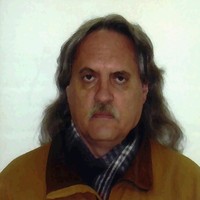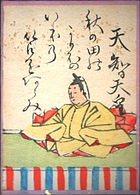The great debate about when Shinto began continues to be a subject of controversy. Some say in ancient times, some say in the seventh century, and some say in the medieval period. Helen Hardacre’s monumental book on Shinto: A History (2016) inevitably touches on the topic, and in the article below scholar Ross Bender discusses her stance.
***************
RESPONSE TO HELEN HARDACRE’S SHINTO: A HISTORY
Prepared for Society for Study of Japanese Religions Meeting in Conjunction with Association for Asian Studies Annual Conference, Toronto, 3/17/2017 by Ross Bender

Author, Ross Bender
(This is an extracted and abridged passage. For the original article on academia.org, please click here.)
When the advance publicity for the book came out, I read Richard Bowring’s effusive blurb with mixed emotions. Dr. Bowring wrote: “Professor Hardacre manages to lead us carefully and judiciously on a long journey through what can often be recalcitrant, complex material. The notoriously difficult question ‘What is Shinto?’ has finally been answered.”
On the one hand I was tremendously relieved that this notoriously difficult question had finally been answered; on the other hand I was somewhat disappointed that the question had finally been answered, and that this might mean that no more remained to be said about this fascinating phenomenon. But when I bought the book and began to read it, I discovered that Dr. Hardacre was more modest in her assessment; she writes “… I make no grand claims for my approach, anticipating that future researchers will supersede it with more precise analytic tools.” As John Breen and Mark Teeuwen reminded us in their 2010 New History of Shinto, there are “many Shintos, and many histories.” Certainly there is so much more concerning this multi-faceted and multi-splendored religion, if we may call it a religion, that awaits to be discovered and analyzed.
Dr. Hardacre from the outset presents her claims and her thesis forcefully and lucidly. Thus, and I quote the very first sentence, “From earliest times, the Japanese people have worshipped Kami.” This forthright statement might appear to some as fighting words, since the tendency in recent discourse has been to problematize the question of origins, and particularly to challenge the notion of an indigenous reverence for the Kami. But Hardacre declares from the outset that “I argue that although the term Shinto hardly appears, we can identify Shinto’s institutional origins in the late seventh- and early eighth-century coordination of Kami worship, regarded as embodying indigenous tradition, by a government ministry following legal mandates.”
In a long section titled “The Term Shinto” she rejects the claim of various medievalists that “Shinto thus begins not in the ancient period but was fully established for the first time in the medieval period.” (p. 43), quoting Inoue Hiroshi). Here she further restates her thesis, “It seems to me that once system and centralization emerge in the late seventh century, it is reasonable to speak of Shinto in recognition of the watershed represented by the Jingikan, a structured ritual calendar, Kami Law, and the incorporation of Kami priests into the government. By comparison with this ritual, institutional, and social system, doctrinal and philosophical expositions came later and were transmitted in esoteric frameworks restricting their transmission to initiates.”
,,, [In the Nara era] The common formulation was that the sovereign was first to serve the Three Treasures (Buddha, Law, Priesthood), second to revere the kami, and third to nurture the people. While this articulation has traditionally been characterized as Buddhist, Shinto, and Confucian respectively, the situation was of course more nuanced. The political theology of the time also included other aspects of Chinese thought, including particularly a systematic omen theology which functioned in tandem with other theological expressions.
…………….

Emperor Tenji, who in the mid-seventh century first asserted divine descent of the imperial line
[In Senmyo 14, when Emperor Shomu announced his abdication and the accession of Empress Koken [749], the imperial proclamation employed] a lengthy and typical formula explicating the sovereign’s legitimacy: “Let all hear the words which are the command proclaimed by the Emperor, Beloved Child of Yamato, who rules all under heaven as a manifest god. Let all hear the command of the Emperor, which he decrees and pronounces as a god carrying out the duties of the High Throne of Heavenly Sun Succession, ruling the country in the divine lineage, age after age of Emperors, beginning with the reign of the distant divine ancestor, according to the decree that “Our Grandchildren shall have the rule of all under heaven,” given by the Divine Male Ancestor and the Divine Female Ancestor, seated as gods in the High Plain of Heaven.
Here the mandate to rule on the High Throne of Heavenly Sun Succession is traced back not to Amaterasu, but to the Divine Male and Female Ancestors on the High Plain of Heaven. Norinaga commented that these divine ancestors, kamurogi kamuromi no mikoto 神魯棄・神魯美命, may refer explicitly to Izanagi and Izanami or perhaps to all the male and female imperial ancestral deities down to Amaterasu.
The phrase Yamato Neko 倭根子 occurs nine times in the senmyo [imperial rescript]. I have translated it as “Beloved Child of Yamato,” following Herbert Zachert’s “Das Liebe Kind von Yamato,” although the term is not transparent. Hermann Ooms has speculated that it should be translated literally as “Root Child of Yamato,” It is significant that both Shomu and Koken/Shotoku reached back to Emperor Tenji [661-672], “the Emperor who ruled from the capital of Otsu in Omi,” as a guarantor of legitimacy. In Senmyo 14 there appears the supposed decree of Emperor Tenji that the imperial line should not be broken.
******************

Thanks to John Dougill for calling attention to my ‘Response to Hardacre.’ Dr. Hardacre was present via Skype at the session and gave a lengthy and illuminating reply.
I’d like to mention also my PMJS Papers article on ‘Shinto in Nara,’available on my Academia site. Also, I have just published “The Imperial Edicts in the Shoku Nihongi: A Translation with Text and Transliteration. (CreateSpace 2018, available on Amazon.) This is the first English translation of the 62 senmyou, which include much information about Shinto and other religions and political ideas in the 8th Century.
Thank you for writing in, a great honour for us. It would have been fascinating to hear Dr Hardacre’s response. As from March we’ll have both Mark Teeuwen and John Breen in Kyoto, which sounds like great potential for a debate about the beginnings of Shinto. Given the denunciation of it as a devil’s religion by early Catholic missionaries, it would be pleasing if 666 under Emperor Tenji could be fixed as the origin!